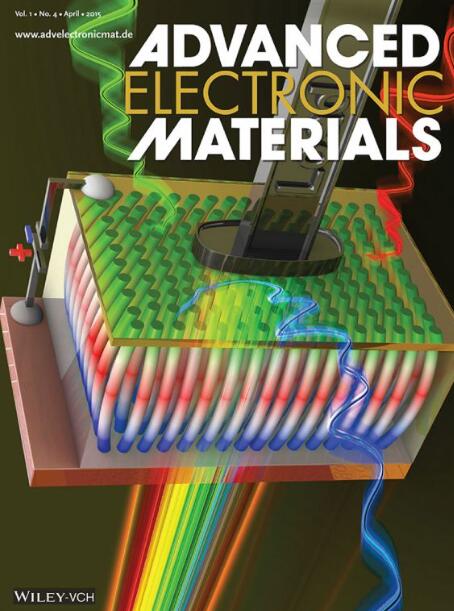Controllable Laser-Induced Phase Transition in Multilayer 2H-MoTe2 and its Raman Spectroscopy Study
IF 5.3
2区 材料科学
Q2 MATERIALS SCIENCE, MULTIDISCIPLINARY
引用次数: 0
Abstract
Transition metal dichalcogenides (TMDCs) heterojunctions, with their atomically precise planar structures, enable the formation of smooth and well-matched interfaces between different TMDCs components, effectively mitigating performance losses caused by lattice mismatches and rendering them highly suitable for applications in advanced devices, including 2D photodetectors, flexible light-emitting diodes, high-mobility field-effect transistors, and solar cells. Lateral heterojunctions, owing to the covalent bonding between distinct phases, demonstrate high carrier mobility, significantly lowering the contact resistance at the interface. However, the fabrication of lateral TMDCs heterojunctions is limited by several factors, including randomness, interfacial quality, and process reproducibility. In this study, a straightforward laser irradiation method for inducing phase transitions in MoTe₂ is presented. By optimizing the laser power and exposure duration, multilayer 2H-MoTe₂ encapsulated with h-BN is successfully transformed into the 1T′ phase, as verified by Raman spectroscopy. Moreover, temperature-dependent Raman spectroscopy is performed on the laser-induced 1T′-MoTe₂, which demonstrated the transformation into the Td phase at ≈230K, suggesting the high structural quality of the laser-irradiated 1T′-MoTe₂. These results demonstrate a practical approach for phase engineering of MoTe₂, providing valuable insights into the fabrication of lateral heterojunctions and their future applications in high-performance photoelectric devices.

可控激光诱导多层2H-MoTe2相变及其拉曼光谱研究
过渡金属二硫族化合物(TMDCs)异质结具有原子精度的平面结构,可以在不同的TMDCs组件之间形成光滑且匹配良好的界面,有效地减轻了晶格不匹配造成的性能损失,并使其非常适合应用于先进器件,包括二维光电探测器,柔性发光二极管,高迁移率场效应晶体管和太阳能电池。由于不同相之间的共价键,横向异质结表现出高载流子迁移率,显著降低了界面处的接触电阻。然而,横向TMDCs异质结的制造受到几个因素的限制,包括随机性、界面质量和工艺可重复性。在这项研究中,提出了一种直接的激光照射方法来诱导MoTe₂中的相变。通过优化激光功率和曝光时间,经拉曼光谱验证,h-BN包覆多层2H-MoTe 2成功转变为1T′相。此外,对激光诱导的1T’-MoTe₂进行了温度相关的拉曼光谱分析,结果表明,在≈230K时,1T’-MoTe₂转变为Td相,表明激光辐照的1T’-MoTe₂具有较高的结构质量。这些结果为MoTe₂的相位工程提供了一种实用的方法,为横向异质结的制造及其在高性能光电器件中的未来应用提供了有价值的见解。
本文章由计算机程序翻译,如有差异,请以英文原文为准。
求助全文
约1分钟内获得全文
求助全文
来源期刊

Advanced Electronic Materials
NANOSCIENCE & NANOTECHNOLOGYMATERIALS SCIE-MATERIALS SCIENCE, MULTIDISCIPLINARY
CiteScore
11.00
自引率
3.20%
发文量
433
期刊介绍:
Advanced Electronic Materials is an interdisciplinary forum for peer-reviewed, high-quality, high-impact research in the fields of materials science, physics, and engineering of electronic and magnetic materials. It includes research on physics and physical properties of electronic and magnetic materials, spintronics, electronics, device physics and engineering, micro- and nano-electromechanical systems, and organic electronics, in addition to fundamental research.
 求助内容:
求助内容: 应助结果提醒方式:
应助结果提醒方式:


